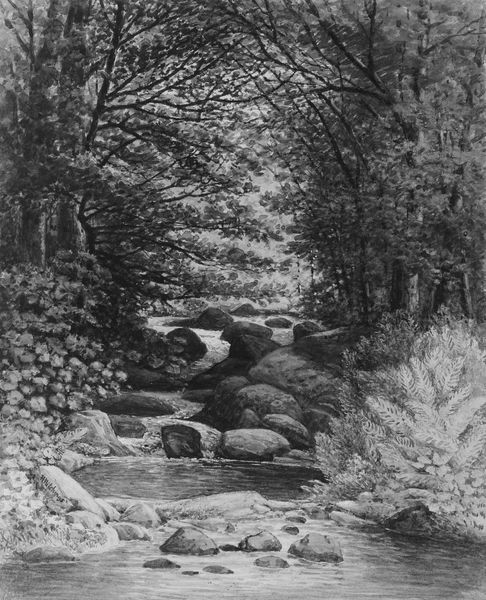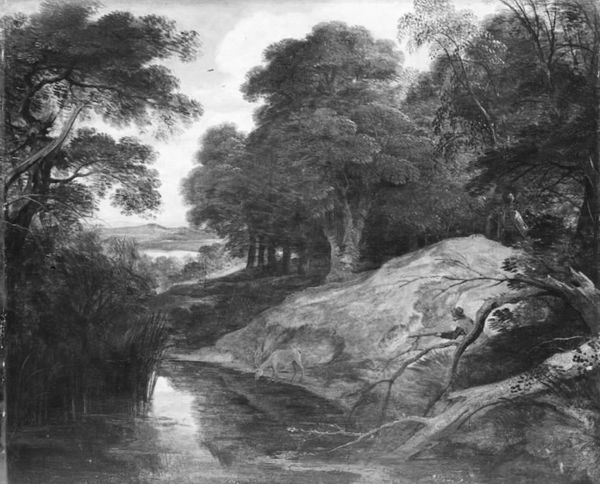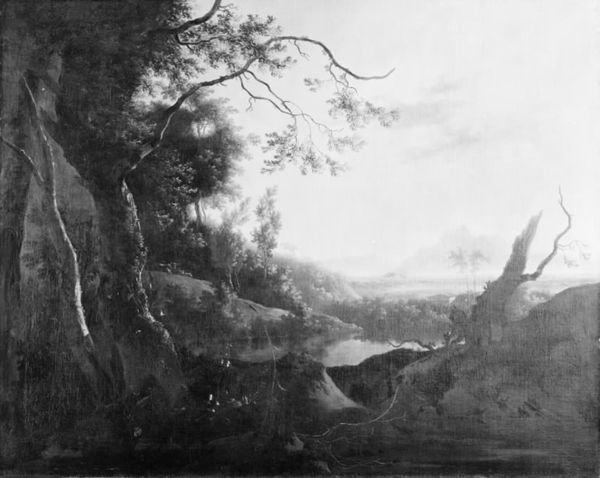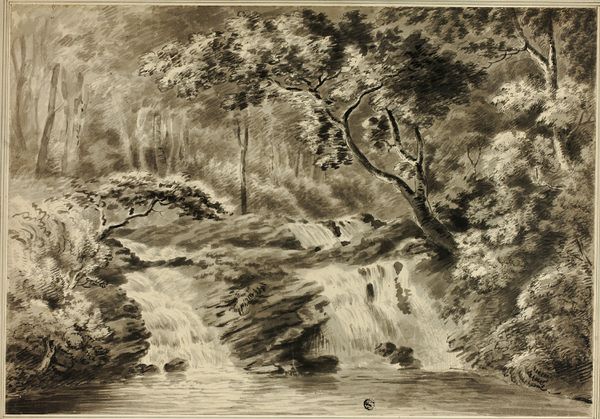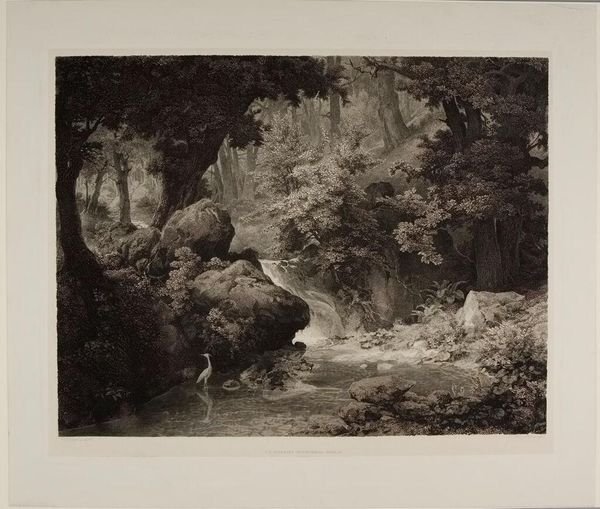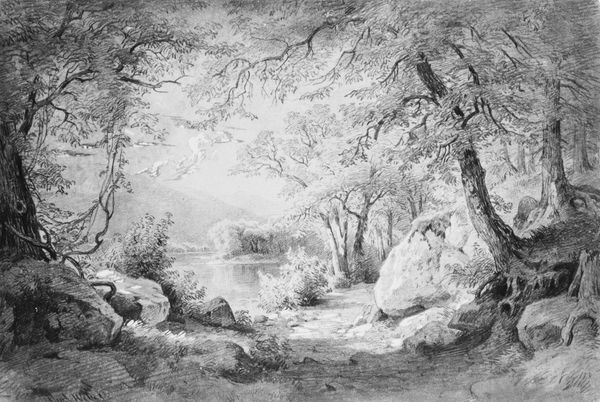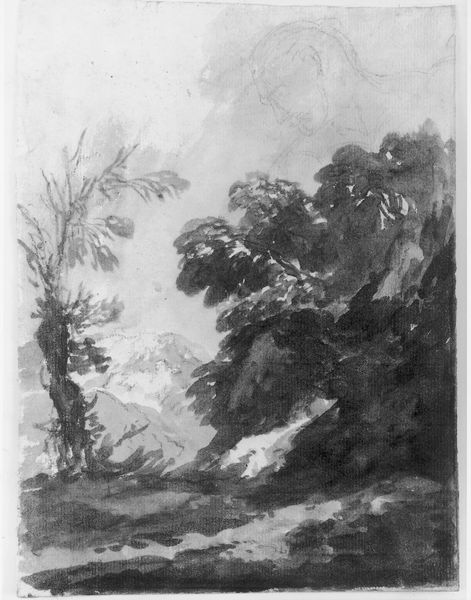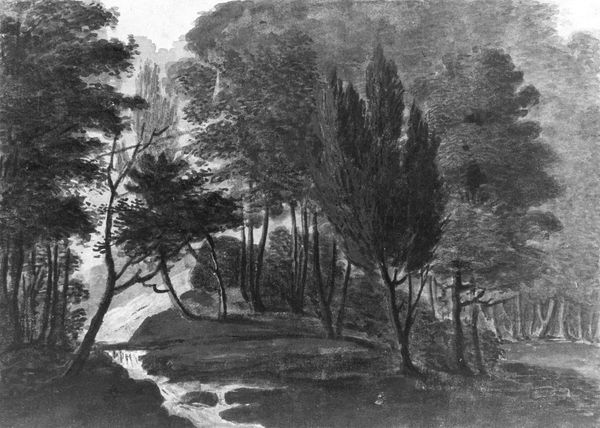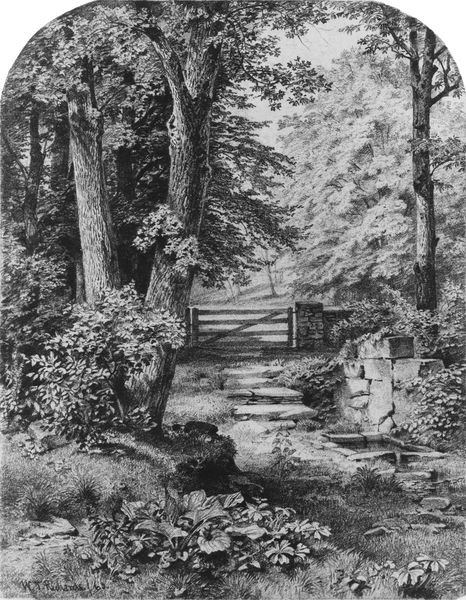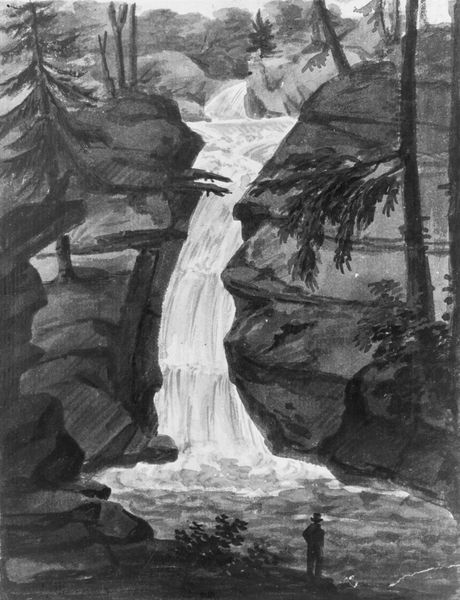
Niagara Falls—Canadian Side by Moonlight 1811 - 1816
0:00
0:00
painting, plein-air, watercolor
#
tree
#
painting
#
plein-air
#
landscape
#
waterfall
#
monochrome colours
#
watercolor
#
romanticism
#
monochrome
#
monochrome
Dimensions: 13 1/2 x 9 1/4 in. (34.3 x 23.5 cm)
Copyright: Public Domain
Editor: This is Pavel Petrovich Svinin's "Niagara Falls—Canadian Side by Moonlight," created between 1811 and 1816 using watercolor. The monochrome palette and romantic style give it a really dramatic, almost haunting feel. What do you see in this piece? Curator: I see more than just a depiction of natural beauty. Think about the context: early 19th century. Landscape paintings like this weren't just about pretty scenery; they were deeply intertwined with ideas of national identity and territorial claims. This view, the Canadian side, would've had specific connotations regarding the relationship between the United States and British Canada. Does that monochrome palette remind you of anything specific from the period? Editor: Hmm, the only thing coming to mind is early photography, but I know that came later. Curator: Consider printmaking at the time, think lithographs, engravings--these circulated widely. A monochrome work like this evokes that world, making the image more accessible, reproducible, and thus, politically potent. It is designed to circulate! Whose gaze is centered in the work, and from where? Editor: I guess the gaze is of someone grounded, safe behind the rocks. It is an outsider looking in. Curator: Exactly, we must recognize that Svinin was not an indigenous person and, like many of his contemporaries, he carried a colonialist worldview. Do you see the way the tree bends precariously, arching into the composition? What about the moon’s delicate lighting? That feels aligned with Romanticism, especially an artistic choice privileging an expressive rendering over pure visual documentation. These choices help frame how we should understand and, potentially, resist these biased historical depictions. Editor: So it's not just a landscape; it's a statement about power, place, and representation. I hadn't thought of it that way. Thank you. Curator: Absolutely. Examining art through the lens of its socio-political context can unlock powerful insights, especially surrounding complex conversations of race, gender and power.
Comments
No comments
Be the first to comment and join the conversation on the ultimate creative platform.
